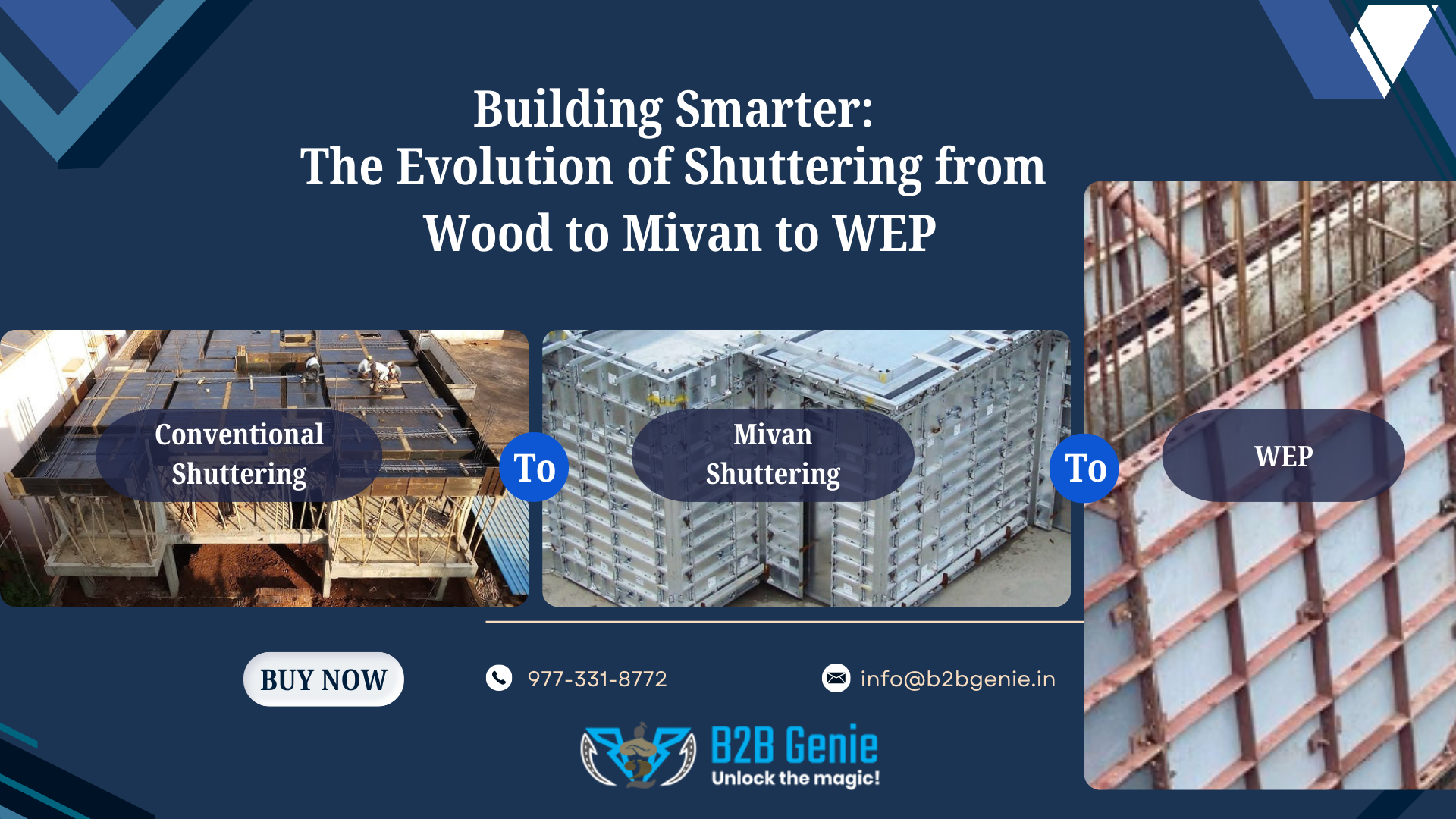Building Smarter: The Evolution of Shuttering from Wood to Mivan to WEP
The construction industry continuously evolves, shifting towards better efficient, sustainable, and cost-saving solutions. One such transformation is the shift from traditional wooden shuttering to Mivan shuttering, and now, an even more advanced alternative—Woodfree Eco Ply(WEP). This evolution not only improves efficiency but also reduces environmental impact while enhancing durability and cost savings.
The Transition from Conventional Shuttering to Mivan Shuttering
Traditional shuttering methods mostly depend on timber and plywood, which creates several challenges, including high material wastage, increased labour costs, and environmental concerns due to deforestation. To address and diminish these issues, the industry adopted Mivan shuttering- an aluminium formwork system that offers greater durability, faster construction speeds, and reduced reliance on skilled labour.
Benefits of Mivan Shuttering:
- Faster Construction: The aluminium framework allows for faster assembly and disassembly, reducing project timelines.
- High Precision: The modular nature of Mivan ensures uniformity in construction, reducing errors and rework.
- Reduced Labor Costs: With simplified installation processes, Mivan requires fewer skilled workers compared to conventional methods.
- Durability: The aluminium formwork has a longer lifespan and can be reused multiple times, making it cost-effective.
- Minimal Wastage: Unlike timber-based shuttering, Mivan reduces material wastage, making it a more sustainable option.
However, despite these benefits, Mivan shuttering has its limitations. The high initial investment cost and difficulties in modifications, require de-shuttering oil for separating the shuttering from concrete, or alterations during construction can be challenging. Moreover, the environmental impact of aluminium production remains a concern.
From Mivan Shuttering to Woodfree Eco Ply (WEP): The Future of Sustainable Construction
While Mivan shuttering has significantly improved efficiency, the industry now aims for even more sustainable and cost-effective alternatives. In modern construction, Woodfree Eco Ply (WEP) is emerging as a game-changer, offering the benefits of traditional plywood without the environmental impact.
What is Woodfree Eco Ply (WEP)?
Woodfree Eco Ply (WEP) is an innovative, sustainable, and high-performance alternative to traditional plywood and aluminium shuttering in construction. WEP is a revolutionary material made from recycled Low-density polyethylene (LDPE), designed to eliminate the need for timber, reducing deforestation while offering superior durability and reusability.
Unlike conventional plywood, which deteriorates over time due to moisture exposure and repeated usage, WEP is waterproof, fire-retardant, and resistant to shrinking, swelling, or warping. Its strong structure allows it to be used up to 400 times, making it a cost-effective solution for construction professionals.
One of its standout attributes is its non-stick surface, which prevents concrete from adhering during formwork removal. This eliminates the requirement for de-shuttering oil, reducing material costs and labour efforts. Further, WEP is highly impact-resistant, ensuring it won’t break easily due to accidental drops or heavy use on construction sites.
Beyond construction, WEP’s versatility extends to furniture, flooring, and industrial applications, making it a multi-purpose and 100% recyclable material. Its long lifespan, ease of use (cutting and nailing like plywood), and eco-friendly composition position WEP as the next-generation solution for modern, sustainable construction.
Key Benefits of WEP in Construction:
- Eco-Friendly: Made from recycled plastic, WEP prevents deforestation and contributes to sustainability.
- Extended Lifespan: Compared to wood-based shuttering, WEP has a much longer life cycle, reducing replacement costs.
- Reusable and Durable: WEP sheets can be used up to 400 times, significantly cutting down material wastage.
- Waterproof & Fire Retardant: Unlike plywood, WEP does not absorb moisture or degrade over time, making it ideal for all weather conditions.
- High Impact Resistance: WEP does not break due to drops or rough handling, ensuring greater longevity.
- No Concrete Adhesion: Concrete does not stick to WEP surfaces, simplifying the removal process and eliminating the need for de-shuttering oil.
- No Shrinking or Swelling: Unlike traditional plywood, WEP maintains its dimensions, regardless of environmental conditions.
- Heat Resistance: Ideal for extreme weather conditions, ensuring safe and effective construction use.
- Cost Savings: The long reusability factor makes WEP a more economical choice in the long run.
- Easy to Use: Can be cut, nailed, and installed like traditional plywood, ensuring ease of adoption.
- 100% Recyclable: At the end of its lifecycle, WEP can be fully recycled, making it an environmentally responsible choice.
Summary
The transition from conventional shuttering to Mivan shuttering and now to Woodfree Eco Ply (WEP) represents a substantial jump forward in construction technology. WEP not only enhances efficiency, durability, and cost savings but also plays a crucial role in promoting sustainable and eco-friendly construction practices. With its longer lifespan, reusability, and environmental benefits, WEP is redefining the way shuttering is done, making construction smarter, greener, and more cost-effective.
By embracing this shift, construction companies can significantly reduce their carbon footprint while achieving greater operational efficiency and cost savings. The future of construction lies in innovative materials like WEP, paving the way for a stronger, greener, and more efficient construction sector.
B2B Genie is committed to revolutionizing the building materials industry by offering innovative and sustainable solutions like Woodfree Eco Ply (WEP). Our mission is to help construction companies reduce costs, enhance efficiency, and build a greener future. Partner with us and take the next step towards smarter, sustainable construction!

